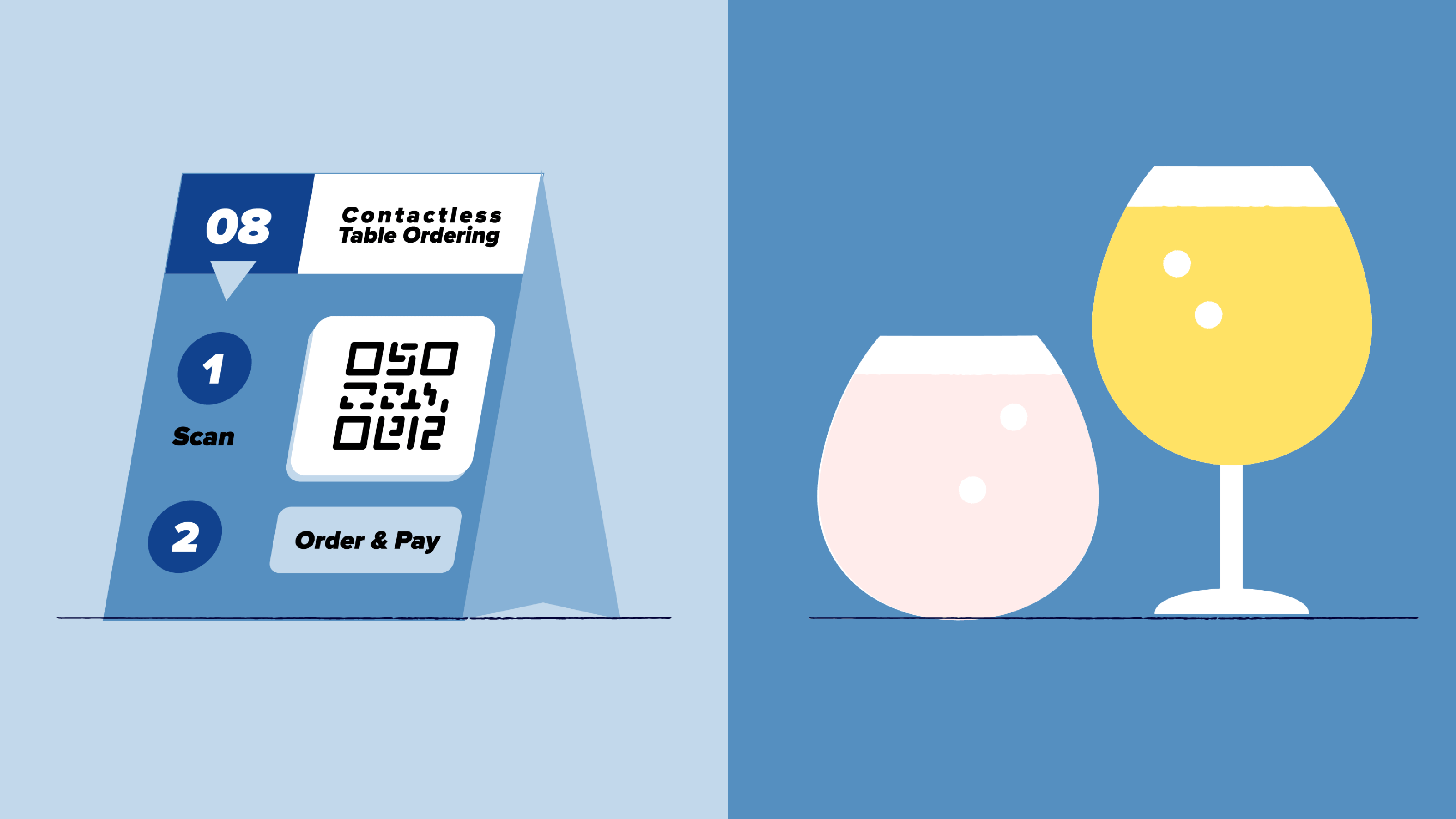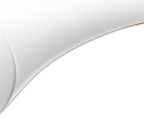
Quick response (QR) Codes are a versatile technology with widespread applications in the restaurant industry. With a single scan, customers can access menus, make reservations, and pay for their meals without physical contact. During the COVID-19 pandemic, QR Codes addressed safety concerns by minimizing physical touchpoints and promoting contactless transactions in restaurants.
But while touchless transactions are a great perk of QR Codes, they’re far from the only benefit. This guide will explore other game-changing ways restaurants can leverage QR Codes to their advantage.
How can QR Codes be used in restaurants?
The short answer? In just about any customer-facing operation! Here are just a few ways restaurant owners can use QR Codes to improve their guest experience, increase efficiency, and reduce costs.
Digital menus
Pre-pandemic, restaurant menus were typically physical documents that required frequent updates due to changing prices and menu items. Restaurant operators would face costs for reprinting and designing new menus—not to mention the negative environmental impact.
Today, QR Codes replace traditional physical menus in many restaurants, allowing customers to access a digital menu by scanning a QR Code placed on the table. Digital menus offer restaurants several benefits, including:
- Easy menu updates: Unlike printed menus, you can easily update digital menus to reflect changes, specials, and prices in real time.
- Cost savings: With QR Codes, you no longer need to print and design new menus, resulting in significant cost savings. You can also avoid the risk of menu theft and damage.
- Reduced environmental impact: Over three billion trees are cut down yearly to produce paper products, including paper menus. By switching to digital menus, you can significantly reduce your restaurant’s environmental footprint and contribute to a greener planet.
- Enhanced customer experience: Digital menus offer customers a more interactive and engaging experience, with visuals, descriptions, and reviews for each menu item. They can customize their orders and make special requests through the contactless menu, enhancing their dining experience.
Contactless ordering
Customers can place orders directly on their smartphones when they scan QR Codes, eliminating (or greatly reducing) the need for order-taking by servers. Other benefits of contactless ordering using QR Codes include:
- Speed and efficiency: Customers can browse the online menu, place their orders, and make payments from their phones, reducing wait times and improving overall efficiency.
- Accurate orders: With restaurant QR Code menus, customers can view the whole menu and customize their orders without miscommunication or errors. This ensures that each order is accurate, reducing the risk of customer complaints and improving satisfaction levels.
- Reduced physical contact: Contactless ordering significantly reduces physical touchpoints between customers and staff, promoting safety and hygiene in the restaurant.
Happy customers can lead to repeat business and positive word-of-mouth marketing, ultimately boosting your restaurant’s revenue.
Mobile payments
Customers can now make contactless payments using mobile apps such as Apple Pay, Google Pay, and PayPal by scanning QR Codes on their bills.
Before QR Codes, customers had to hand their credit cards to the server, who would swipe them at the POS terminal. With QR Codes, customers can scan and authorize payment directly from their smartphone without physical contact. This facilitates faster and more secure payments, increasing table turnover and cash flow.
Feedback and reviews
Over 99.9% of customers read reviews before purchasing, highlighting the importance of online reviews in decision-making. Restaurants can use QR Codes to encourage customers to leave feedback and reviews by placing them on receipts or at the restaurant’s exit.
When customers scan the QR Code, they can access a survey or review platform to provide feedback and ratings. This information is valuable for restaurants to identify areas of improvement, address customer concerns, and ultimately enhance their overall dine-in experience. Positive reviews also serve as powerful marketing tools, attracting new customers and building credibility for your restaurant.
Table reservations
QR Codes have also made it easier for customers to make restaurant reservations. By scanning QR Codes, customers can easily find the restaurant’s online reservation system to check table availability and make a reservation in real time. This eliminates the need for customers to call or physically visit the restaurant to make a reservation, saving time and promoting convenience.
Social media linking
Social media is a powerful marketing tool for restaurants, enabling them to connect and engage with their customers like never before. With QR Codes, restaurants effortlessly direct their customers to vibrant social media profiles on platforms like Facebook, Instagram, Twitter, and more.
This keeps customers in the loop with the latest promotions and events and provides a captivating platform for restaurants to showcase mouthwatering menu items, share glowing reviews and testimonials, and actively interact with customers by promptly responding to comments and messages.
Where to display QR Codes in a restaurant
QR Codes’ success in a restaurant setting relies heavily on visibility and accessibility. To ensure maximum usage and effectiveness, it’s important to display them strategically—in key areas within a restaurant where customers are most likely to interact with them.
Menus
Restaurant menus are the most apparent and effective place to display QR Codes. Customers can scan the QR Code to view detailed information about the dishes, including ingredients, allergens, nutritional value, and customer reviews.
The recommended size for QR Codes on a menu is at least 2 cm x 2 cm (0.8 in x 0.8 in).
Table tents
Marketers and event planners often use these small, self-standing cards on tables or countertops to promote specials, promotions, or events. Restaurants can include a QR Code on table tents to direct customers to online menus, social media pages, or landing pages for special offers or discounts. A QR Code of at least 3 cm x 3 cm (1.2 in x 1.2 in) on a table tent provides enough range for customers to scan while keeping it visible and easily accessible.
Tabletop inserts
Tabletop inserts (or table talkers) are small cards or signs placed on tables to serve as promotional or informational material. These can display QR Codes that link customers to the restaurant’s website, online ordering system, or loyalty program sign-up page.
The minimum size for QR Codes on tabletop inserts is 2 cm x 2 cm (0.8 in x 0.8 in), but you can make it larger to make it more prominent.
Posters
Posters offer an excellent opportunity to display QR Codes prominently and creatively. They can promote special events, new menu items, or the mobile ordering process.
The size of the QR Code on a poster can vary depending on its placement and design, but it should be at least 2 to 3 square centimeters. Include instructions on how to scan the QR Code and what customers can expect after scanning it.
Sandwich boards
Sandwich boards, or A-frame signs, are double-sided signs placed on the sidewalk or in front of the restaurant to attract passersby. A QR Code on a sandwich board serves as an attention-grabbing call to action, inviting customers to scan the code for more information or special offers, such as a discount on their first online order.
The QR Code should be at least 3 to 4 cm (1.2 to 1.6 in) squared for maximum visibility and scannability. Place the sandwich board in a visible area with enough space for customers to approach and scan the code without obstruction.
Benefits of QR Codes for restaurants
The benefits of QR Codes go beyond just convenience and efficiency for customers—they also offer numerous advantages for restaurant owners and staff.
Improved operational efficiency
QR Codes can help streamline restaurant operations by reducing the time and effort required for ordering, payment, and service. With QR Codes on menus and tabletop inserts, customers can view menus, place orders, and make payments directly from their devices.
This reduces the need for physical menus, taking orders manually, and handling cash or credit card transactions, ultimately saving time and reducing the risk of human error.
QR Code ordering can also streamline table service, allowing servers to quickly and easily access customer information, preferences, and orders, leading to a more efficient and attentive dining experience.
Enhanced marketing efforts
Effective restaurant marketing is critical to running a successful venture. QR Codes offer a creative and cost-effective way to enhance marketing efforts, including targeted promotions, customer engagement, and data collection.
The QR Code can direct customers to a landing page to sign up for a loyalty program, leave a review, or participate in a survey. Restaurants can also use QR Codes to gather valuable data and insights about customer preferences, demographics, and behaviors, which can inform future marketing campaigns and menu offerings.
Real-time menu updates
QR Codes also make it easy to update menus in real-time, ensuring that customers always have access to the latest offerings and pricing. This is especially helpful for seasonal or daily specials and menu changes due to ingredient availability or pricing adjustments.
Instead of reprinting menus every time there’s a change, restaurants can update the information on their online menu and the QR Code will automatically reflect these changes—saving time and resources.
Reduced costs
Without physical menus, restaurants can save on paper and printing costs while being more environmentally friendly. QR Codes eliminate the need for special menu inserts or add-ons for promotions or specials, as you can easily update and promote through the QR Code link. Additionally, using QR Codes can reduce the need for marketing materials such as flyers or posters, saving on printing and distribution costs.
How do I create QR Codes for my restaurant?
QR Codes may seem complex (and understandably so), but they’re simple to create and implement. You’ll need a QR Code generator like Bitly, which offers pre-designed templates and customizable options for creating QR Codes and tracking the performance of your codes.
Here’s how you can create QR Codes with Bitly:
- Log in to Bitly, navigate to Create New, and select QR Code to create your code.
- Fill in your destination URL and all relevant information.
- Select Design your code. Depending on your plan, you have the option to change the code’s frame, pattern, and color. Select the color picker to choose a color or enter a hex, HSL, or RGB color code.
- Add a customized Bitly logo or social media icons if your plan has this option, or keep the code as it is to create a generic version.
- Select Create QR Code.
- Test the QR Code with your tablet or phone’s camera.
- Download the code by selecting the Copy or Download button.
- Paste or upload the image where you want to display the code (such as on a poster, tabletop insert, or menu). Run a test scan to ensure the code works as intended.
Generate QR Codes for your restaurant with Bitly
With the rise of contactless interactions and digital solutions, QR Codes have become essential for restaurants looking to enhance their customer experience and streamline operations. Restaurants implementing QR Codes can benefit from improved operational efficiency, enhanced marketing efforts, and reduced costs.
Bitly offers a user-friendly and customizable platform for creating Dynamic QR Codes, making it easy and accessible for any restaurant to implement this technology.
Ready to elevate your restaurant’s success with the power of QR Codes? Check out Bitly’s pricing plans and start creating custom QR Codes today.



